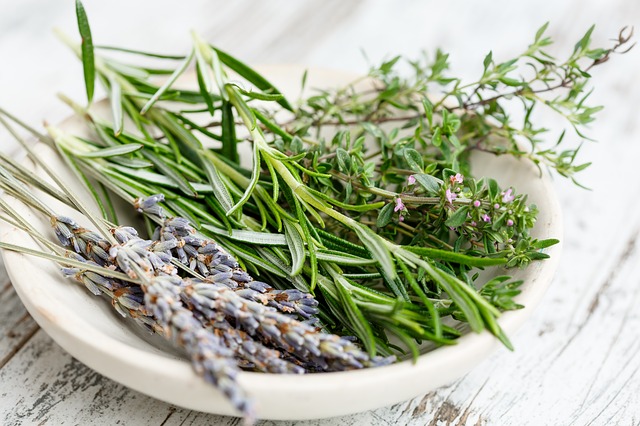ROSEMARY Rosmarinus officinalis
“There’s rosemary, that’s for remembrance” – Shakespeare, (Hamlet)
This had to be the herb for the 50th Anniversary of the Canterbury Herb Society.
 Native to the Mediterranean and Asia, the Latin name Rosmarinus translates as “dew of the sea” due not only to its native habitat but the dew like blossoms seen at a distance. It is a very hardy, fragrant, evergreen perennial smallish shrub either upright or sprawling and will grow almost anywhere surviving droughts and colder climates with its stiff needle-like leaves. It does not like wet swampy conditions.
Native to the Mediterranean and Asia, the Latin name Rosmarinus translates as “dew of the sea” due not only to its native habitat but the dew like blossoms seen at a distance. It is a very hardy, fragrant, evergreen perennial smallish shrub either upright or sprawling and will grow almost anywhere surviving droughts and colder climates with its stiff needle-like leaves. It does not like wet swampy conditions.
Many varieties have been cultivated/crossed and today flower colours range through shades of blue, purple, pinks and white. Foliage comes from green through variegated to a yellow. The plant, which becomes woody with age, makes a fragrant, long flowering, garden plant and if kept clipped, a nicely scented hedge. It is easy to grow from cuttings.
Rosemary was considered sacred to ancient Egyptians, Greeks and Romans and valued for its medicinal and aromatic virtues down the centuries. It was believed to improve memory, worn as a wreath to symbolize fidelity, love and abiding friendship. A wife grows it in remembrance of her life before marriage. For crime and plague prevention it was put in wine vinegar to wash the feet. It is still used for remembrance at funerals and at war commemorations.
Today culinary use is made of rosemary in herbal teas, with meats, vegetables while the oil is used in perfumes, shampoos, cleaning products and as incense.
Men beware! An old saying,
“Rosemary thriving when planted by the wife, indicates that she wears the trousers.”

